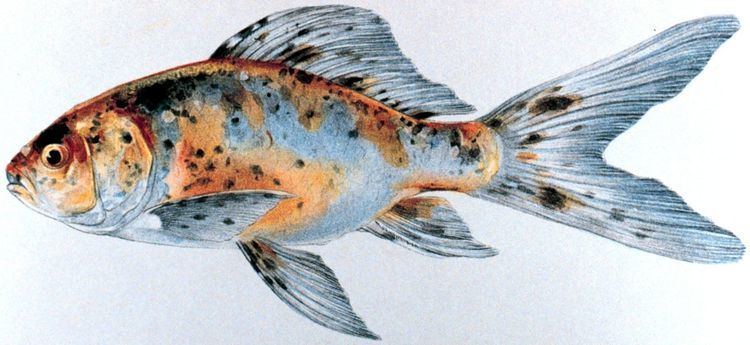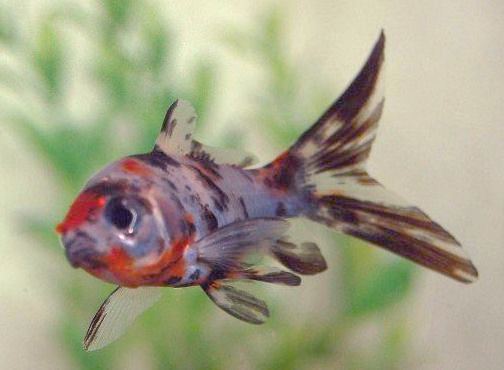Scientific name Carassius auratus Rank Breed | Higher classification Goldfish | |
 | ||
Similar Comet, Fantail, Oranda, Ryukin, Common goldfish | ||
Spawning shubunkin goldfish
Shubunkins (朱文金, translated literally as "red brocade") are a hardy, single-tailed fancy goldfish with nacreous scales and a pattern known as calico. The Shubunkins are of Japanese origin.
Contents

The Shubunkin was created by Yoshigoro Akiyama (ja:秋山吉五郎), by crossing Calico telescope eye with Common goldfish.
Description

Shubunkins are similar to the common goldfish and comet goldfish in appearance. They were first bred in Japan, from mutations in telescope eye goldfish (Demekins) c. 1900. They have streamlined bodies with well-developed and even fins. However, the Shubunkins are calico goldfish; they possess nacreous scales (an intermediate between metallic and transparent scales that are pearly in appearance). The overlapping patches of red, white, blue, grey and black (along with dark speckles) normally extend to the finnage of Shubunkins. Blue is the most prized colour in Shubunkins. Calico originally denoted three coloured varieties of goldfish that did not include blue. The best blues are produced from line breeding of good blue specimens of Shubunkins. Sometimes good blues may be obtained by breeding bronze (metallic) with "pink" (matte-scaled) goldfish, but a grey slate colour may result instead.
It may take several months for the nacreous coloration to develop on a young fry (baby fish). Shubunkins are excellent pond fish because they reach a length of 9 to 18 inches (23 to 46 cm) at adulthood. A Shubunkin goldfish is considered an adult at 2 to 3 years of age, even though they live much longer.
Genetics
Blue colouring in goldfish comes from black pigment within the body wall. It will not show as blue in fish with metallic type scales, but will look blue if the fish has matte or nacreous scales. The nacreous (formerly called calico) scale type is produced in a fish that carries the gene for metallic scales, as well as the gene for matte scales (the fish is heterozygous). Only nacreous scales are accepted by the Shubunkin breed standards.
